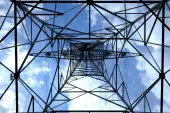
India holds firm on 175GW renewables target for 2022
It refuted claims that it will be 42% short of the target due to shaky policies and tariff caps.
India’s Ministry of New and Renewable Energy (MNRE) refuted the claim of CRISIL Research that it won’t be able to push its renewable installed capacity to its target of 175GW by 2022. In a September report, CRISIL said that India’s renewable capacity could only grow by 40GW to 104GW, which is roughly 42% short of the national target.
Waning developer interest has caused 26% of the 64 GW of government-auctioned projects to get no or lukewarm bids and another 31% to face delays in allocation after being tendered, CRISIL argued. The ratio of auctioned or awarded projects to tendered projects plunged to 34% in fiscal 2019 from 77% over fiscal years 2015-2016 and 2016- 2017 (cumulative).

“The doubts are ill-founded and not reflective of the status on the ground and plans ahead,” MNRE said in a statement. By the end of September 2019, India has installed more than 82,580MW of renewable energy capacity with around 31,150MW of capacity under various stages of installation. By the first quarter of 2021, India would have installed more than 113,000MW of renewable power capacity, translating to nearly 65% of the targeted capacity.
This installed capacity is set to grow further with around 39,000MW of renewable power capacity at various stages of bidding to be installed by September 2021, MNRE said. This would raise the total installed capacity to 87% of the target. “With only 23,000MW of renewable power capacity left to bid, India is confident that the target of installing 175,000MW of renewable power capacity will not only be met but exceeded,” MNRE added.
The ministry also cited three schemes that are expected to boost solar capacity: the Central Public Sector Undertaking (CPSU) Scheme Phase-ll for 12GW of grid-connected solar photovoltaic (PV) power projects; the PM-KUSUM scheme for 25.75GW of solar projects for the farming sector; and a rooftop solar scheme, which will provide assistance for 4GW of small rooftop capacity and incentives to discoms for 18GW of capacity.
Shaky ground for policy
India’s renewable goals are being short-circuited by its unstable policy environment, as shown by the incoherence between the policy thrust on RE, on the one hand, and the actual action by implementation agencies like the Solar Corporation of India (SECI) and state distribution companies, CRISIL argued.
The firm cited the ongoing issue of tariff renegotiation in Andhra Pradesh, in which the state’s discoms still owe $363.26m (INR 2,600 crore) to renewable energy generators as the state government had been delaying payments over a tariff dispute.
CRISIL also cited the Rajasthan government’s recent draft solar and hybrid policy that proposes an additional annual levy of $3,439-$6,987 (INR 2.5 lakh-INR5 lakh) per MW on all projects that sell power to entities outside the state. “Should this be implemented, it could be highly detrimental for the growth of RE capacities given that Rajasthan is one of the most sought-after states for solar power plants,” it said.
The lowering of tariff caps has also constrained project viability and has resulted in the renegotiation of tenders, wherein counterparties disagree on pricing. “The Bhadla Solar Park in Rajasthan, which saw tariff bids of INR2.44 per unit in May 2017, has become a benchmark of discom expectations on tariff bids today, resulting in a solar tariff cap of around INR2.5-INR2.6 per unit,” CRISIL said.
Wind energy projects, meanwhile, are facing even greater turbulence. There is hardly any bidding for fresh wind energy projects today, CRISIL said, as their viability has reduced following the shift from fixed tariffs to competitive bids, and also because of an increase in capital costs with bleeding original equipment manufacturers no longer discounting equipment.
The ministry responded that they have transparent bidding and facilitation for procurement of power at competitive rates. These initiatives have resulted in a significant downward trend in solar and wind power tariffs, MNRE said.
“The wind power tariffs has fallen from 5.8 cents (INR4.18) per unit in 2016 to 3.4 cents (INR2.43) per unit during last year and even today it remains below 3.8 (INR2.75) per unit. Similarly, the solar tariffs have fallen from 6.2 cents (INR4.43) per unit (with VGF) to 3.4 cents (INR2.44) per unit. The Government of India’s endeavour remain that renewable power is procured at a rate which is acceptable to distribution companies,” it added.



















 Advertise
Advertise







